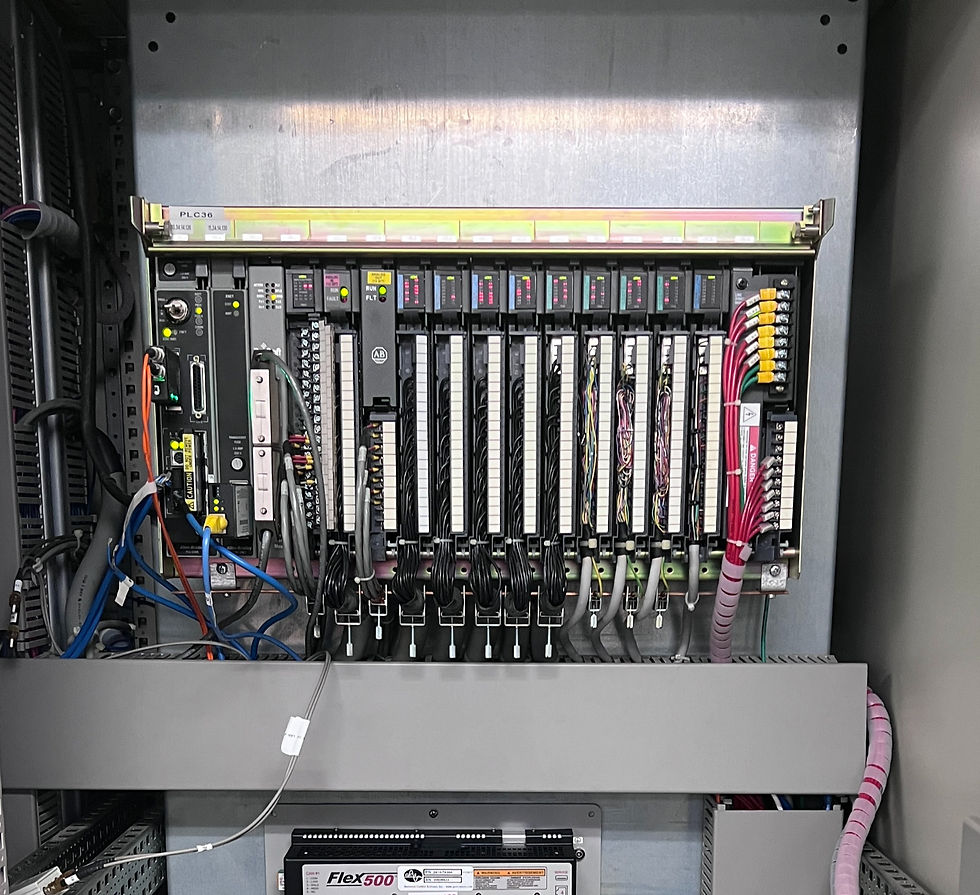The Rise of Virtualization in Distributed Control Systems: What You Need to Know
- David Nemec

- Jan 27
- 4 min read
The virtualization of Distributed Control Systems (DCS), such as Honeywell Experion PKS and ABB 800xA, is revolutionizing industrial automation and control. Virtualization involves running multiple software environments on virtual machines (VMs) hosted on physical servers. This shift has been driven by advances in computing, the need for enhanced scalability, and the growing demand for cost-efficient, flexible, and resilient systems in industries like oil and gas, chemicals, and power generation.

Trends in Virtualization of DCS
Cloud Integration Many DCS providers are incorporating hybrid cloud solutions. While critical systems often remain on-premise for latency and security reasons, cloud-based backup and simulation are becoming mainstream. For instance, Emerson’s DeltaV DCS now supports integration with cloud-based services for analytics and training.
Edge Computing With the rise of Industrial Internet of Things (IIoT), edge computing is being integrated into virtualized DCS systems. Edge devices process data closer to the source, reducing latency and offloading non-critical tasks from centralized servers.
Digital Twins Virtualized environments make it easier to implement digital twins—virtual replicas of physical systems. These models are used for predictive maintenance, testing, and optimization. ABB’s 800xA features capabilities to integrate digital twins into its architecture.
Containerization Instead of full VMs, some systems are adopting lightweight containers (e.g., Docker) to deploy and run DCS applications more efficiently. This trend aligns with advancements in Kubernetes for orchestration.
Cybersecurity Virtualization has introduced robust security measures, including snapshots, secure rollback features, and improved patch management. Honeywell’s Experion PKS, for example, now offers advanced threat detection tools integrated into its virtualized platforms.
Pros and Cons of DCS Virtualization
Pros
Cost-Efficient Scalability Virtualization allows for easier expansion. Adding a new process control server or operator workstation is as simple as spinning up a new VM. For example, a refinery using Siemens PCS 7 can scale operations without purchasing additional hardware.
Simplified Maintenance and Recovery Virtualized DCS systems allow for quick backup and recovery. Snapshot functionality ensures systems can be restored to a previous state in minutes. In Honeywell PKS, server failures can be mitigated by deploying backups on standby hardware.
Ease of Migration Moving to updated versions of DCS software becomes simpler. A migration project with ABB 800xA, for example, can occur without physical hardware replacement.
Enhanced System Redundancy Virtualization supports high-availability configurations. Redundant VMs can run on different physical servers, reducing downtime risks.
Testing and Training Virtualized environments allow operators to test changes and run simulations without disrupting live processes. Emerson’s DeltaV, for instance, includes an off-line simulation feature for operator training.
Cons
Higher Initial Investment Virtualization requires upfront costs for high-performance servers, virtualization software (e.g., VMware, Hyper-V), and licenses. This can be a barrier for smaller facilities transitioning to systems like Rockwell Automation’s PlantPAx.
Complexity The architecture of a virtualized DCS can be more complex than traditional systems. This requires skilled personnel to manage virtualization platforms, which can increase operational costs.
Cybersecurity Risks Although virtualization provides advanced security tools, a poorly configured virtual environment may introduce vulnerabilities. Ensuring compliance with standards like IEC 62443 is critical.
Dependency on IT Infrastructure A virtualized system relies heavily on IT infrastructure, such as reliable networks and robust servers. A network outage could have a wider impact on the DCS.
Examples of DCS Providers and Their Virtualization Offerings
Honeywell Experion PKS Honeywell’s Experion PKS supports virtualization through VMware, enabling server consolidation, faster disaster recovery, and enhanced system redundancy. Honeywell also provides Experion LX, a smaller-scale DCS with similar virtualization benefits.
ABB 800xA ABB’s 800xA is a highly scalable system that leverages virtualization for flexibility and reduced hardware footprint. Its virtualization platform supports various third-party hypervisors like VMware and Microsoft Hyper-V.
Emerson DeltaV DeltaV systems are optimized for virtualization with features like DeltaV Virtual Studio. This simplifies setup and management of virtual environments, making it easier to deploy simulation and production systems.
Siemens PCS 7 Siemens PCS 7 provides robust virtualization support, emphasizing high availability and scalability. The PCS 7 system integrates seamlessly with Siemens’ broader portfolio, including SIMATIC IT for industrial automation.
Rockwell Automation PlantPAx Rockwell’s PlantPAx system supports virtualized environments, focusing on ease of migration and scalability. PlantPAx leverages the advantages of Rockwell’s FactoryTalk suite for seamless integration with other industrial systems.
Virtualization of DCS represents the future of industrial automation, offering unmatched flexibility, scalability, and reliability. While the initial investment may seem daunting, the long-term benefits far outweigh the costs, particularly for facilities aiming to future-proof their operations.
Should You Migrate an Old DCS System to a Virtualized Environment or Focus on New Installations?
Deciding whether to virtualize an existing DCS system or focus solely on new installations depends on several factors, including the age of the system, current hardware condition, and operational goals.
Migrating an Old System
Virtualizing an older DCS system, such as legacy versions of Honeywell Experion PKS or ABB 800xA, can offer benefits like enhanced scalability, simplified maintenance, and disaster recovery. However, older systems may lack compatibility with modern virtualization platforms, requiring significant updates to both software and hardware. A consultation is therefore highly recommended. In such cases, the cost and complexity of migration may outweigh the benefits. It’s generally more viable if the existing system is still supported by the vendor and hardware is nearing the end of its lifecycle.
Virtualizing New Installations
For new projects or complete system overhauls, virtualization is the clear choice. Modern DCS systems, such as Emerson DeltaV or Siemens PCS 7, are designed with virtualization in mind, making them easier to deploy and manage in virtual environments. Starting with a virtualized setup avoids the technical debt of older systems and ensures future scalability and adaptability.



Comments